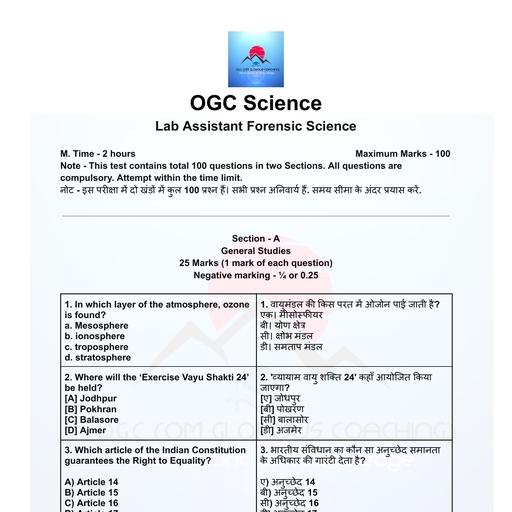Page 1 :
8.1. Macro Nutrients (Principal Elements), , / There are about forty elements involved in the life processes of, living organisms out of which about thirty elements are essential-for, healthy human beings. These are Na, K, Mg, Ca, V, Cr, Mo, Mn, Fe, Co,, Cu, Zn, Sn (metals) and H, C, Si, N, P, O, §, Se, F, Cl, Br, I, (non-metals). The elements H, C, N, O are taken in the form of proteins,, carbohydrates and lipids. These are the major constituents of our food., Besides these, some elements are needed more than 1 mg in our food., These are Na, K, Mg, Ca, P, S and Cl. They are called macro nutrients, or principal elements. They constitute 60-80% of body's inorganic, elements., , 8.2. Main sources and Biological functions of pape, i i j tions present in the, Sodium is the major component of ca, extracellular fluid. Out of the total body sodium coated Oe is peeees, in bones, 40% in extracellular fluid and remaining 10 —e" oe ne, of the body. Adults need 5-15 grams of sodium per day., , i ip, radish, eggs, milk,, Present in leafy vegetables, carrots, spinach, turnip by the body, , ‘ i med :, butter, cheese, cereals, fruits and nuts. It is we byeMibOva [ hat WW, in the form of NaCl and NaHCO). J, , Biolggical Signifiaance, (Sodium maintains ac!, , With chlorides and bicarbonates., (239), , i jation, d base balance in the body: in assoc!, , |
Page 2 :
Inorganic Chemistry-11}, , 240, (ii) Sodium participates in a number of biochemical reactions with, , sium, calcium or zinc etc. and converts insoluble compounds into, soluble salts which can be excreted from the body in the form of urine or, , weating. ., ° (iii) It maintains viscosity of blood., , (iv) It initiates and maintains heart beat., (v)cIf protects body from excessive fluid loss by maintaining, , osmotic pressure of body fluids., (vi) It excretes insoluble toxic substances like Na,SO,, Na,PO,, , from the body., , (vii) HCI present in digestive juice is derived from NaCI present in, the blood while sodium and potassium salts present in the blood make, pancreatic juice and bile juice., , _ (viii) t7also functions in preservation of normal irritability of, , musele“And permeability of cells. :, Sodium is almost completely absorbed by the intestine and about, 75% of sodium is excreted in the form of urine. ', Clinical features : Excess of sodium in the body causes hypernatremia, and its deficiency causes hyponatremia.’ Hypernatremia causes high blood, pressure, hypertension, excessive sweating, lack of proteins and kidney, damage. Sometimes it causes edema which may occur due to circulatory, failure, excessive production of aldosterone and ADH harmone., Hyponatremia is caused by-extreme sweating, diarrohea, vomiting, etc. It causes low blood pressure and sometimes hydrolysis of blood, which may lead to heart failure. Kidneys are also affected by deficiency, , of sodium and it may increase blood urea., , 8.3. Main sources and Biological functions of Potassium, , Potassium is an important intracellular (present within the cell), cation present in body fluids as well as tissues. An adult man needs about, fo , of potassiu Potassium is present in orange,, pine-apple, bananas, dried peaches, potatoes, chicken etc. Coconut water, is a rich source of potassium. After absorption by intestine, potassium, enters digestive juices like gastric juice, bile juice, intestinal juice etc., and then it is removed by the body in the form of urine., , Biological Significance, (i) Potassium maintains acid base ball:, , cells., , ance and. water balance in the
Page 3 :
_jnorganic Chemistry, ), , Eerie ee, (ii) It influences the activity of ca, =, , < - rdic, , (iii) It is required for the featipaiesiee (heart) muscles,, . n :, (iv) It activates the metabolic Sifsiries a nerve impulse., : urin :, , CH, =C—COO- + ADp #8" K 8 glycolysis as, , | - Pyruvate kinase CH,COCOo- + ATP, , OPO,H ‘yruvate, , (y) It’s high intracellular concentration is essenti, jnctions like protein synthesis by ribosomes,, , Clinical features : Excess of i ;, , : ite aes potassium in the body causes, yperkalemia an its deficiency causes hypokalemia., , Hyperkalemia : Excess of potassium in the body damages the, sues of the body and muscles are contracted violently. It also increases, TPase and kinase activity with the loss of sodium ions. Hyperkalemia is, wund inpatients suffering from (i) Addison's disease, (ii) diabetes, rellitus, (iii) renal failure, (iv) severe dehydration., , Symptoms of hyperkalemia are depression of nervous system,, rady-cardia with low heart sounds leading to cardiac arrest, numbness, nd mental confusions., , Hypokalemia : The deficiency of potassium develops chronic, iseases with malnutrition, gastro intestinal losses and alkalosis. In most, {these cases intracellular potassium is transferred to extra cellular fluids, , ihich is quickly removed by kidneys. Symptoms of hypokalemia include, muscular weakness, paralysis and_dilation of heart., , 4. Main Sources and Biological Importance of Magnesium, Magnesium is the fourth most abundant and essential element for, uman body. The body of adult human being contains about twenty gram, fmagnesium. 70-75% of magnesium is present in soft tissues and body, lids. An adult man needs 250-300 mg of Mg per day out of which only, ne third is absorbed by the intestine., _ Magnesium is present in milk, me, oe cabbage, soyabean etc. Green leafy vegetables and, Sources of magnesium., , 5 4, ‘logigal Significance, , h () Magnesium is found in bones and teeth along wi, “sphorus,, , al for metabolic, , , , at, cheese, fruits, almonds, nuts,, potatoes are, , th calcium and
Page 4 :
242 Inorganic Chemistry),, , (ii) It acts as cofactor and activator for various enzymes like, hexokinase, glucokinase, dehydrogenase etc., , 2+, ctr “2, cpp + HPO, , Mg?* 3, ATP ———+> ADP + PO 4, , Clinical features : Excess of Mg in the body may cause blood, cancer, kidney failure and diabetes mellitus, Deficiency of Mg occurs, excessive sweating or through urine in the form of soluble salts, It May, cause acidity, metabolic disturbances, neuromuscular irritation with, muscular tremors. Mg deficiency also leads to rickets,, , 8.5. Main Sources and Biological Importance of Calcium, , Calcium is the most abundant mineral present in the body. In an, adult man, the total content of calcium is about 1-1.5 kg. It is mostly, present in bones and teeth in the form of calcium phosphate and calcium, carbonate. The concentration of calcium in bones and teeth is 20 mg/100, gm and its concentration in the serum-of blood is 9-11 mg/100 ml., Calcium is also present in the soft tissues of body, extra-cellular Huid and, plasma. The richest source of calcium is milk and cheese. It is also, present in beans, cabbage, turnip, green vegetables, nuts and egg yolk., Adult human being needs about 800 mg calcium per day while the, growing children and pregnant women may need about 1.5 gram per day., , Biological significance, , (i) 99% of calcium is present in bones and teeth in the form of, calcium phosphate and calcium carbonate., (ii) Ca** ions initiate blood clotting. Prothrombin present in the, , blood is converted into thrombin in the presence of Ca’* ions and, thromboplastin., , ‘a ., bin ——————> Thrombin, Procheoaton Thromboplastin, , Thrombin so formed converts fibrinogen into fibrin which forms the, clot and prevents bleeding. ;, Fibrinogen —Zhrombin_, Fibrin, clot, (iil) Ca’* ions act-as messenger for harmonal action. Ca”* ue, used to maintain homeostasis and level of parathyroid harmone., of calcium is excreted as water soluble calcium salts by urine.
Page 5 :
(iv) Calcium remains active in aia:, soorolling nerves. It is needed to activate ok, nerve impulse. °!, (v) Calcium is also needed to activate th nzym, guccinic dehydrogenase. vas ATFs an, vi) Ca?* ions form complexes with Kt i, somplenes perform important functions in biological aoe,, muscle contraction, glycolysis etc, meee: Te, (vii) The concentration of Ca** ions in extra cellular fluid j, 1S more, , than intracellular fluid. Therefore Ca”* ions have ;, , ; great affin, water, proteins and enzymes. Ca”* ions bind with digestive es, amylase, protease and regulate their functions, =, , Clinical features : Excess of calcium in the body causes hypercalcemia and the deficiency causes hypocalcemia., , 243, , and alkal, , : ine ., ine durj Medium in, , SMission of, , and Mg 2+, , Hypercalcemia, , (i) When the concentration of calcium is more in the body, it starts, depositing in the form of CaCO, and Ca,(PO, ), at both ends of bones,, joints and teeth., , (ii) It may lead to kidney failure, Addison's disease and, thyroxicosis., , (ili) Excess of calcium causes Lithogenesis, i.e., formation of stones, in the body like gallbladder stones and kidney stones., , Hypocalcemia, , (\) The deficiency of calcium results in poor development of bones, and teeth,, __ (ii) The deficiency of calcium, phosphorus and vitamin-D causes, Tickets, The children suffering from rickets show retarded growth,, deformed bones like bowlegs, enlarged joints, knock knees ete, , (ili) It causes osteoporosis i-e., loss of bone mass and leads to bone, fractures — Ti, , (iv) The blood clotting time is increased., , (Vv) The nerves and muscles are uncontrolled., , 48. Trace Elements and Role Played by Some Elements in, the Body, , () Chromium, (ii) Molybdenum, (iii) Manganese,



















































